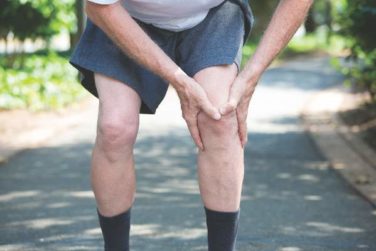AT ENDO 2015
SAN DIEGO (FRONTLINE MEDICAL NEWS) – Skeletal maturation is more advanced in African American nonobese prepubertal girls and boys, compared with children of other races, even after body composition and size are taken into account, a large federally funded study showed.
“This means that other factors beyond differences in body composition [the amount of muscle and fat in the body], perhaps nutritional, hormonal, genetic, or mitochondrial, should be investigated as additional potential explanations,” Dr. Shana E. McCormack said in an interview at a meeting of the Endocrine Society. “A better understanding of these factors may enrich our understanding of skeletal health in children. In addition, clinicians who use bone age to assess children with early or late puberty may be informed by these insights.”
Previous studies have demonstrated that there are differences between children of African American and European descent with respect to bone mineral density, said Dr. McCormack of the diabetes center for children and the congenital hyperinsulinism center at Children’s Hospital of Philadelphia. “These differences persist into adulthood as well; it may be that these differences relate to the pace of skeletal maturation, or development of the adult skeleton, which seems to occur earlier in African Americans than Europeans. Clinically, skeletal maturation is assessed using a bone age x-ray of the left hand. Previously, it had been suggested that higher rates of obesity in African Americans might account for their more advanced skeletal maturation. However, in this study of exclusively nonobese children who had not yet entered puberty, we showed that ancestry-specific differences in skeletal maturation persist.”
In the future, Dr. McCormack said a better appreciation of ancestry-specific differences in skeletal maturation may inform understanding of corresponding variation in bone mineral density. Currently, endocrinologists “use bone age x-rays when they take care of a child who has either early or delayed puberty, to assess where that child is,” she said. “It’s one piece of information that helps determine if additional evaluation is necessary, so understanding the strengths and limitations of the test is valuable. We’ve shown that even in these nonobese kids, there’s a 4- or 5-month difference that’s attributable to ancestry. I think we need better, more updated bone age standards for clinicians to use.”
In a multisite effort supported by the National Institute of Child Health and Human Development called the Bone Mineral Density in Childhood Study (BMDCS), Dr. McCormack and her associates collected serial simultaneous bone age assessments for skeletal maturation, anthropometrics, Tanner staging, and body composition data from bone measurements taken with dual-energy x-ray absorptiometry, along with self-reported population ancestry in 1,011 subjects with a mean age of 8 years. The first available bone age assessment for each child was included. Two experts rated the hand-wrist radiographs according to the standards of the Greulich-Pyle bone age scale. To compare bone ages across age and sex and to account for increased variance related to diverse ancestries, the researchers generated a within-cohort bone age z score. They used Centers for Disease Control and Prevention 2000 standards to calculate body mass index and z scores. The current analysis was limited to prepubertal (Tanner stage I for both breasts/genitalia and pubic hair) children with a BMI greater than the 3rd but less than the 95th percentile.
Nearly half (48%) of the study subjects were girls, 17% were African American, 13% were overweight, and 1% were underweight. The researchers found that bone age z score was higher in African American girls vs. girls of other ancestry (P = .0004) and higher in African American boys vs. those of other ancestry (P = .0002). This corresponded to an advancement of around 4.8 months in African American girls vs. those of other ancestry (P = .0008) and 5.4 months in African American boys vs. those of other ancestry(P = .0001).
In multivariate regression analyses that accounted for lean mass, fat mass, height, and age, African American ancestry was independently associated with more advanced skeletal maturation in both girls (P = .039) and boys (P = .014). In addition, increased lean mass was independently associated with skeletal maturation after ancestry and the clinical covariates in both girls (P = .041) and boys (P = .001) were taken into account. The effect of fat mass did not reach statistical significance in either sex.
In addition to receiving funding from NICHD, the BMDCS study received grants from the National Institutes of Health and the National Center for Advancing Translational Sciences. Additional support was provided by the Pediatric Endocrine Society Clinical Scholars Award, and by the Children’s Hospital of Philadelphia Metabolism, Nutrition, and Development Research Affinity Group Pilot and Feasibility Grant. The researchers reported having no relevant financial conflicts.
dbrunk@frontlinemedcom.com On Twitter @dougbrunk




